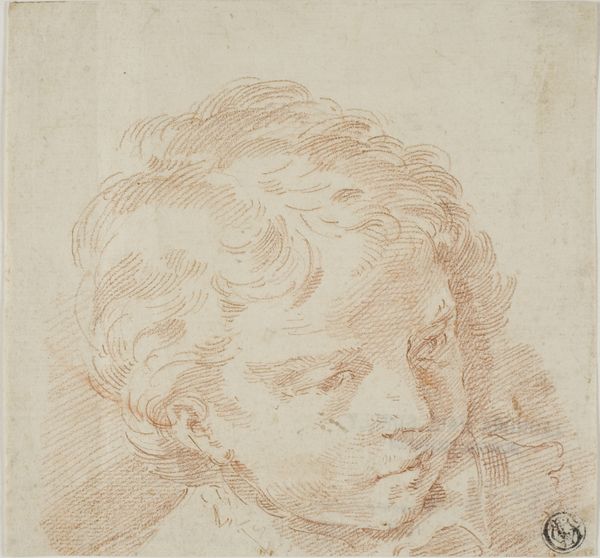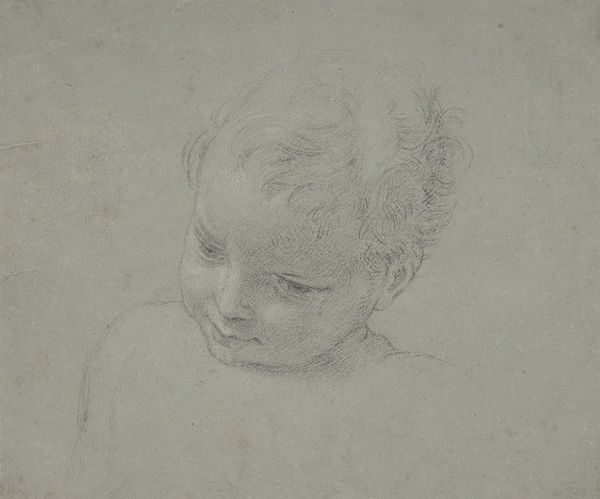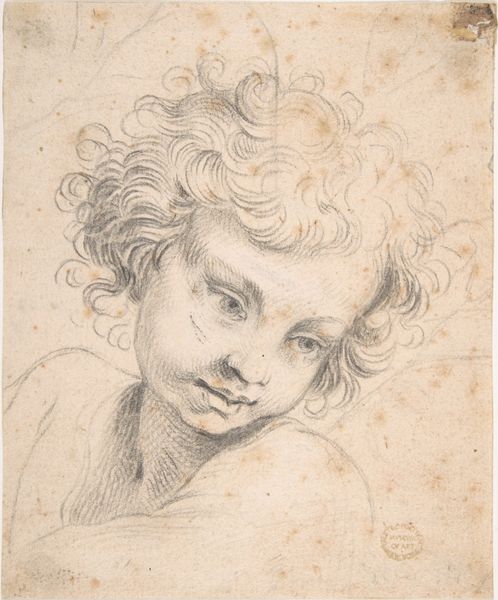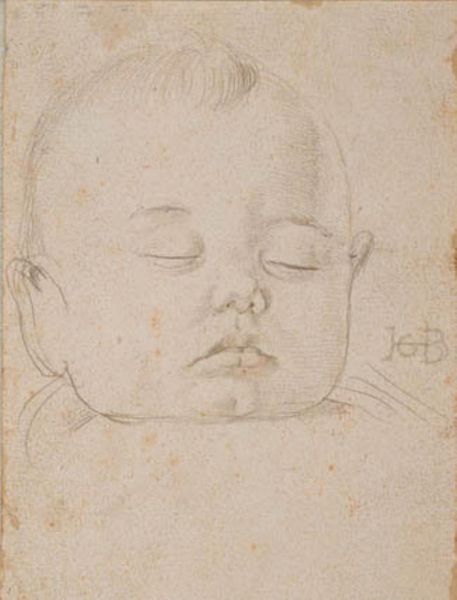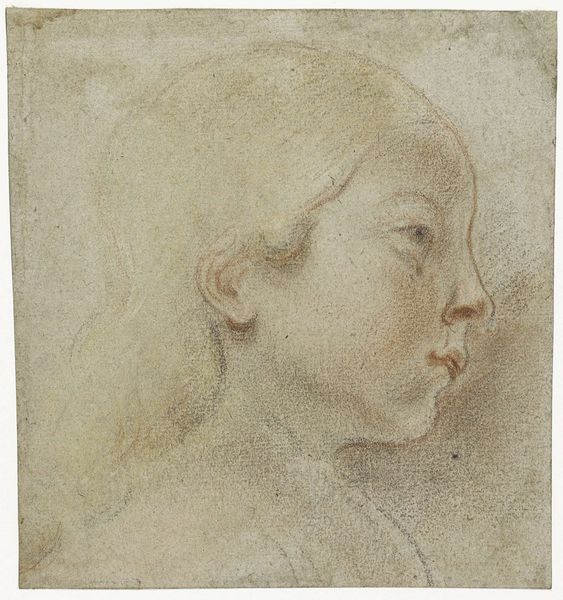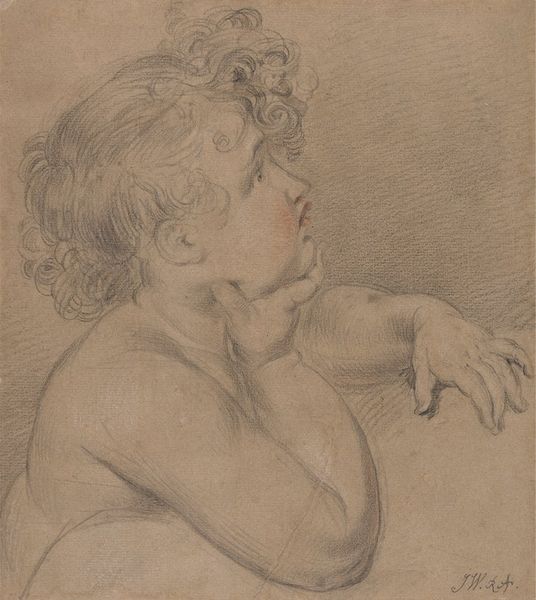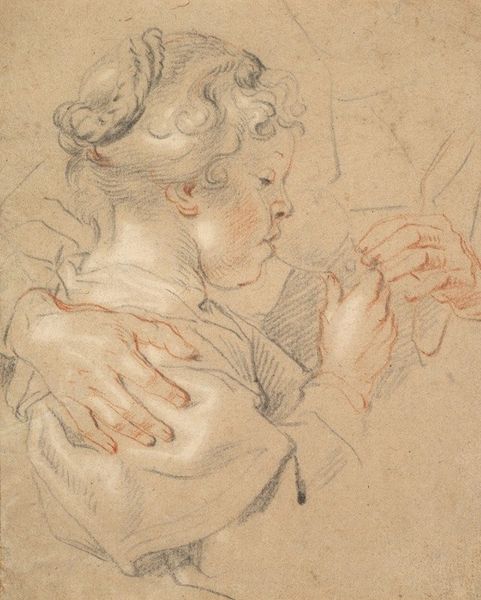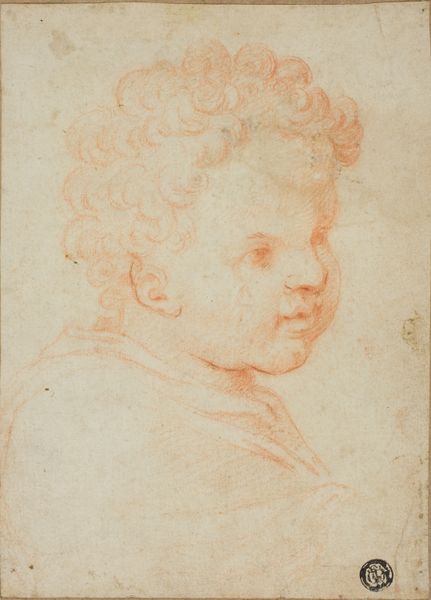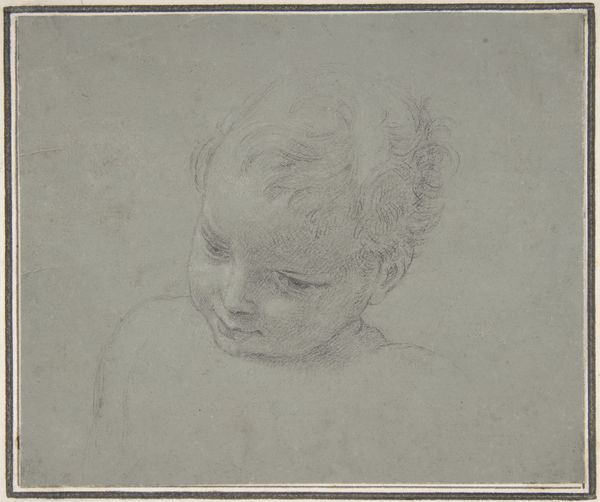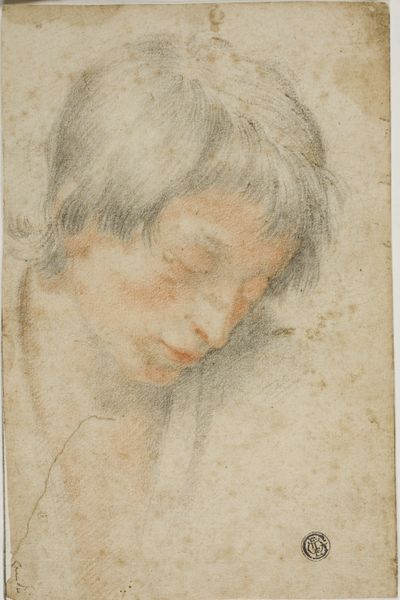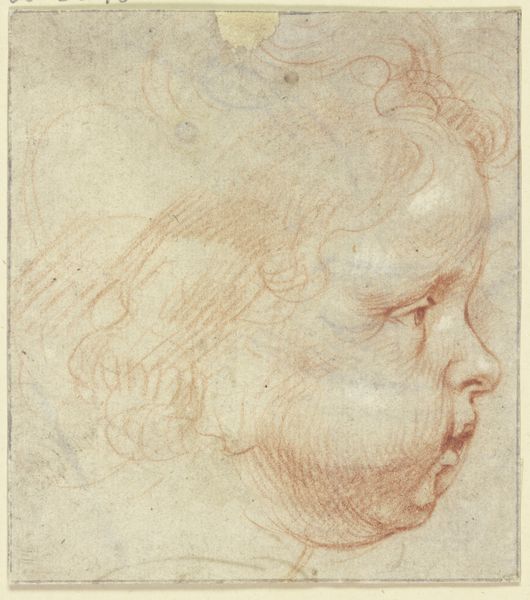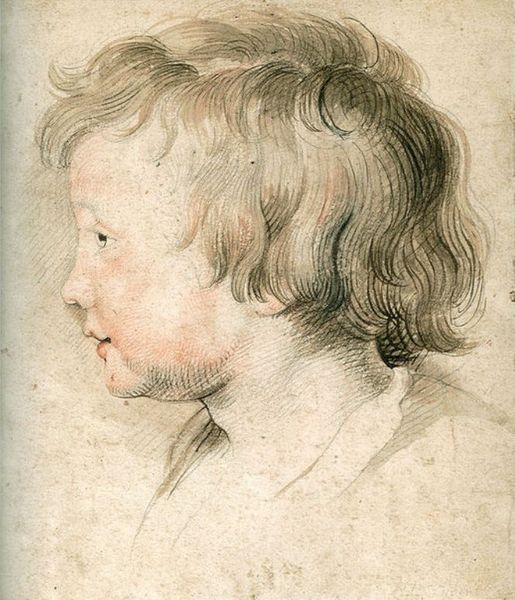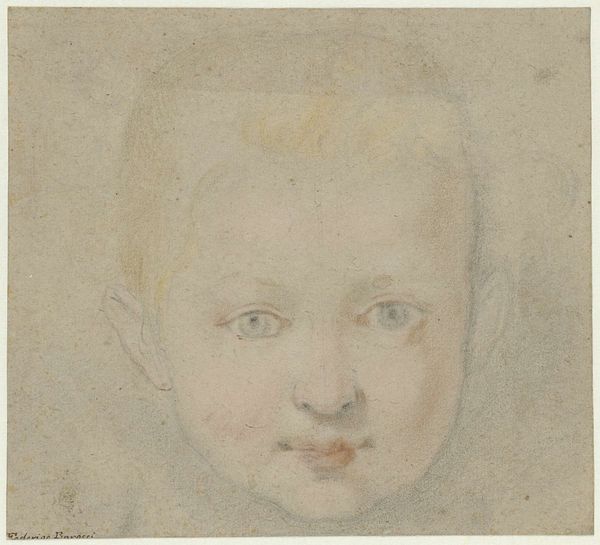
drawing, pencil, charcoal
#
portrait
#
drawing
#
charcoal drawing
#
figuration
#
form
#
11_renaissance
#
pencil
#
portrait drawing
#
charcoal
#
northern-renaissance
Dimensions: 187 mm (height) x 169 mm (width) (bladmaal)
Curator: This is "Head of a young man in profile to the right," a drawing currently housed in the SMK, Statens Museum for Kunst. Though the artist remains anonymous, we can place the work somewhere between 1536 and 1603. Editor: My first impression is one of incredible delicacy. The softness of the charcoal, the almost fragile nature of the line work… it feels like a captured moment, a fleeting impression. Curator: Precisely. The use of charcoal and perhaps a touch of pencil allows for a subtlety of shading that conveys a remarkable sense of depth, despite being a profile view. One has to wonder the original context in which a sketch such as this would emerge. Perhaps part of a study, or a preparatory element for a larger work? Editor: Or perhaps a method of practicing form by someone learning how to model the human face? Consider the availability of materials at the time; charcoal production would have been localized, directly tied to specific trades like blacksmithing or cooking. This dictates not only the availability of materials but their perceived value. It's about more than just visual representation; it’s also about access. Curator: I concede the limitations surrounding production—and indeed, portraits served multiple socio-political functions. Likeness allowed rulers to solidify their position by sending out marriage proposals and visualizing a legacy of family, lineage, and ultimately, power. So whether the means for material production and dissemination existed at different levels of society also bears some thought. Editor: And notice how the material—the very grain of the paper—contributes to the softness. The drawing isn't trying to hide its handmade quality, either. It’s not an illusionistic rendering but emphasizes the labour involved in production. Curator: Which aligns perfectly with Renaissance notions of artistic genius as tied to both intellectual understanding and technical skill, elevating the artist from craftsman to intellectual. Editor: Perhaps then this wasn't about likeness but mastery of production in pursuit of something more, such as social status, reputation, and wealth, beyond simple resemblance. Curator: That's an interesting observation—it reminds us of how layered such seemingly simple artworks can be when approached from different perspectives. Editor: Exactly. By acknowledging materials, their provenance, and production in this portrait of an unknown sitter, we reveal larger socio-economic influences.
Comments
No comments
Be the first to comment and join the conversation on the ultimate creative platform.

